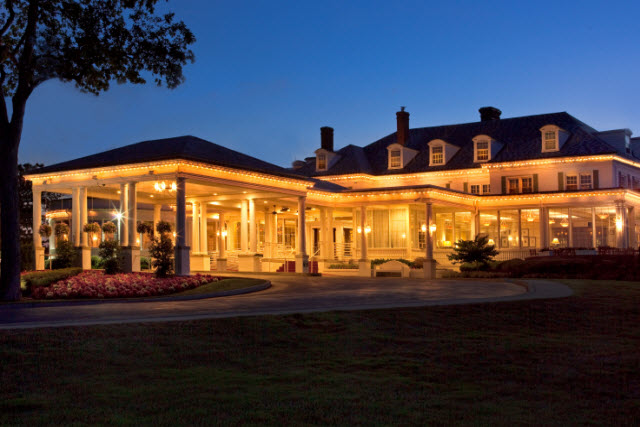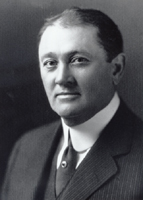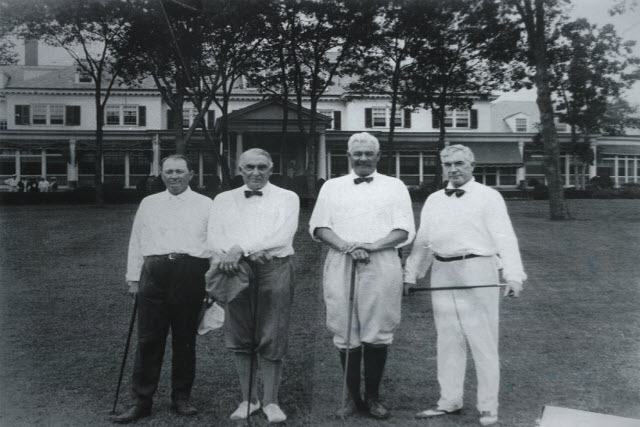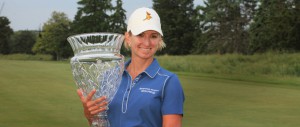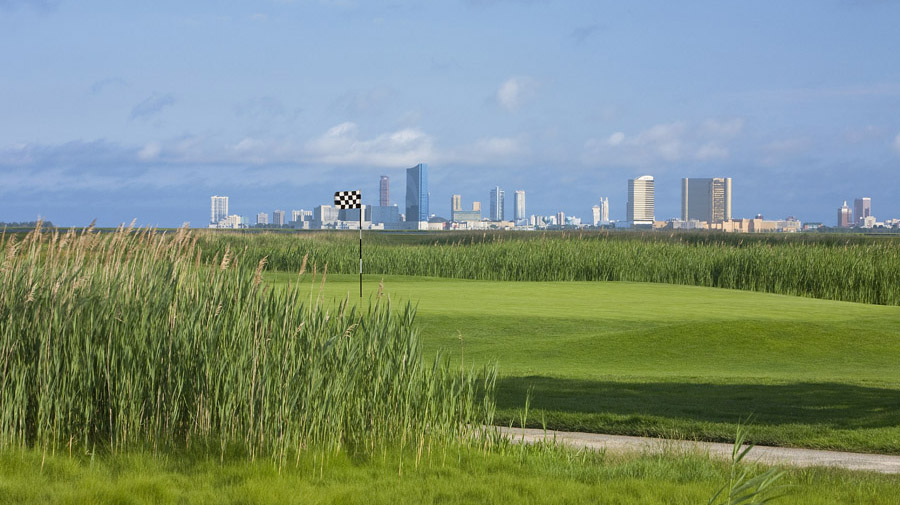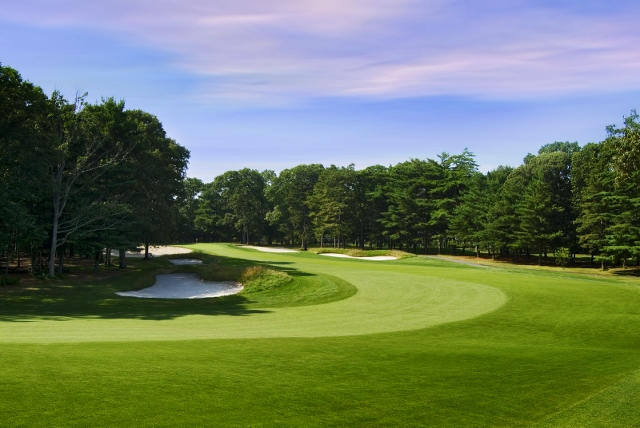Reality shows haven’t been doing New Jersey any favors the last few years. The antidote to the staggering lack of televised character, we humbly suggest, is an infusion of taste and elegance.
Both are lavishly on display at the Stockton Seaview Hotel and Golf Club near Atlantic City, which is a return to the fashionable ambiance of yesteryear combined with the contemporary skills of Dolce Hotels and Resorts running things on the accommodations side, and Troon on the golf front. As the 2014 ShopRite LPGA Classic gets ready to roll into town again (May 26-June 1), the resort is celebrating its 100th year.
 Little need be said about Atlantic City’s past as a seaside resort, although it’s worth pointing out the Miss America Pageant (begun in 1921), the game of Monopoly (introduced in 1934), Fralinger’s or James salt water taffy, a great Bruce Springsteen song and a marvelous Louis Malle film with Burt Lancaster (including Susan Sarandon’s memorable use of a lemon).
Little need be said about Atlantic City’s past as a seaside resort, although it’s worth pointing out the Miss America Pageant (begun in 1921), the game of Monopoly (introduced in 1934), Fralinger’s or James salt water taffy, a great Bruce Springsteen song and a marvelous Louis Malle film with Burt Lancaster (including Susan Sarandon’s memorable use of a lemon).
The first boardwalk was built in 1870. The private Atlantic City Country Club opened in 1897, a John Reid design until 1923, when William Flynn did it over. (It’s since been done completely over again by Tom Doak.)
The ACCC was pretty much the only golfing game in town until Clarence Geist became a member. Geist was an oil and gas baron, and not particularly long on patience. The story goes that he was steaming over a first-tee wait at the club one day, when playing partner Maurice Risley, a realtor, said to him, “Mr. Geist, if I had as much money as you, I’d build my own golf course.”
Geist fired back that he’d do just that, if Risley found him a decent plot of land. Risley put together a package of farmsteads and open grazing land (the resort is now on some 600 acres), so Seaview was developed for 1.5 million 1914 dollars. What is now the Bay Course opened that year, perhaps with some input from Hugh Wilson of Merion fame, but by 1915 finished off as a Donald Ross design.
Geist must have appreciated the work of William Flynn at the ACCC, since he hired the firm of Flynn and Howard Toomey in 1930 to add nine holes, running through the woods of the pine barrens adjacent to the sprawling clubhouse (now the expanded hotel). William Gordon, a former associate of Flynn and Toomey, rounded out the Pines Course to 18 holes in 1957.
Indeed, there’s no lack of history at the once-private resort; fortunately, much of it is on generous display throughout the hallways of the grand hotel (270 rooms and 16 suites). There are terrific framed routings of the courses and vintage photos: President Warren G. Harding playing at the club, eventual winner Sam Snead teeing off here at the 1942 PGA Championship, and shots from various editions of the ShopRite LPGA Classic.
Return to Splendor
I first played the Bay Course more than a dozen years ago, and was immediately smitten. The course, as might be imagined, had been greatly mucked with over time, but then the original Ross blueprints of each hole were discovered, with penciled comments on ways to tweak the holes.
The blueprints are on display in the golf shop. Even better, what they depict is on display out on the course. Well over $1 million was sunk into a Bob Cupp re-do in 1998 to return the course to the way Ross intended and it was money well-spent.
Still, with several changes of ownership in the intervening years, the course and resort were due for what director of golf Kevin DeDonato diplomatically called, “deferred maintenance.” Troon and Dolce had both assumed managerial roles in 2009. But when nearby Richard Stockton College of New Jersey purchased the resort in 2010, it supplied the necessary capital for Dolce and Troon to effect a major turnaround. (The two companies apply similar teamwork at the Silverado Resort and Spa in California.)
The most immediate change will be evident to resort guests walking through the hotel doors–a sumptuous re-do of the lobby and main dining area.
The changes are perhaps more subtle out on the course, said DeDonato, although plenty evident to the LPGA players: “Over time some of the fairways had grown in and the fescue mounds and greens flattened out a bit. So we’ve done a lot of work there and on the bunkers, expanding a few, adding a few. We’ve also worked on the green contours, bringing back that crowned green quality Ross in known for. At the 2011 tournament Juli Inkster said the greens were in the best shape they had been in for 20 years.”
Pros and guests alike will discover more refinements at the course this year–new tee boxes on the fourth, fifth, tenth and twelfth holes, adding 150 yards in overall length. And all the existing tee boxes and tee surfaces were rebuilt to create a more consistent playing surface. There’s also a new bunker complex between the fourth and fifth holes that will complicate shots from the fifth hole back tee.
The women pros won’t be using them, but visitors will find new GPS units in the golf carts. The tee signs and in-ground tee and fairway yardage plates have been redesigned, and there are new retro wooden bunker rakes and pin flags.
Comparable work has been done in recent years on the Pines Course, particularly on the greenside bunkers and selective tree removal. There are still plenty of trees, however, which makes the two courses such distinct tracks.
The Bay Course is a wide open links-style experience, and the experience reaches a major wow factor pretty quickly. A stunning view of sea and sky starts building from the first tee, and culminates on the second green, perched right on the expansive Reeds Bay. Off in the distance is the dreamscape skyline of Atlantic City (now dominated by the glittering Revel casino hotel).
But attention must be paid–the second is the number-one handicap hole, a 421-yard par-4 that is tight and long off the tee, with OB on the right and large fairway bunkers left. If the wind is directly off the Atlantic the small and distant green may be tough to reach in two, and with trouble left, right and behind the green, it’s no time to get tricky.
Once this gauntlet is down, the player will see how it goes–the course isn’t long (not quite 6,500 yards from the tips), but wind is a major factor. The greens are small, tough to hit and hold, packed with subtle breaks, and fast: “They run about 9 to 9.5 normally,” said DeDonato. “They roll at about 12.5 to 13 during the tournament.”
I played by myself, which was good in that I finished in under three hours, but bad in that I lost a sleeve in the long fescue grasses awaiting the wayward. The thought that the native grasses, rough and fescue mounding are grown even longer for the LPGA tournament was frankly a little scary.
The pleasures of the Bay Course include numerous return trips down toward the bay and a collection of challenging par-3s. The seventeenth is short at 104 yards from the white tees, but to a green sloping back to front, ringed by bunkers and, according to DeDonato, “Never an easy putt.”
Whereas the Bay has a liberating openness and creates its challenges around the greens, the Pines lives up to its name, though there are plenty of deciduous trees blowing in the wind as well. The Bay demands a good short game, the Pines demands greater precision and length off the tee, invariably looking down a corridor of green.
Along with the challenge of tight fairways, the par-3s are tough at the Pines, too, particularly the imposing back-to-back fifteen and sixteen, a configuration that came about when a range and academy grounds were put in in the early ‘90s. (The Bird Golf Academy is on hand to help with any type of shot the two courses may require!).
The fifteenth is an attractive hole with a complex of shallow traps all the way up to and around the green, a hefty 185 yards away. The sixteenth is straightforward, but also well-bunkered, with a narrow opening to an even more-distant green, 209 yards from the tee.
Despite the changes over the years, even Clarence Geist would recognize Seaview as essentially the same as in his heyday–a salute to elegance and comfort, with two distinct and compelling golf challenges. And–if he reserved the spot anyway–he still wouldn’t have to wait for a tee time.
[May 20, 2014]
This piece is updated and expanded from its original appearance in the July-August 2012 online issue of Troon Golf & Travel. Check out the current issue here.

